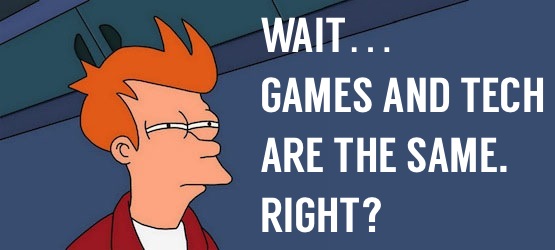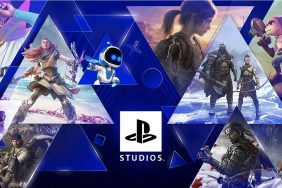Two and a half months ago, Sony held an event in New York where they announced the much-anticipated PlayStation 4 along with a series of games and a renewed focus on ease of development. The company talked about hardware specs, showed a bit of the PS4 user interface, demoed a few games and even unveiled the PS4 controller.
However, as much excitement as everything shown and announced generated, Sony never showed the PlayStation 4 console itself, a decision that spurred mixed reactions across the media. On one hand, there were gaming sites and writers who, while slightly disappointed at first, found the decision to leave the “box” and other important information such as pricing and release dates out of the show understandable. On the other hand though, there were technology and gadget sites and writers who not only criticized the lack of a console in the event, but also deemed the entire show both vague and misleading due to the lack of the information mentioned above.
I am both a tech and a gaming enthusiast and have been following both industries for over a decade, and most of the websites and blogs I follow covered the PlayStation 4 event in some form. However, when I started taking a look across these sites, I noticed a disconnect, a dichotomy if you will: Gaming sites had mostly praise for the way Sony handled its PlayStation 4 event, while the majority of the websites and blogs dedicated to technology and gadgets had mostly words of disdain and even mockery for it, with headlines and comments such as:
- Sony Just Had a Two Hour PS4 Event With No PS4
- Sony fails to show PlayStation 4 console at PlayStation 4 event
- Shit Show
- Sony’s PS4 no-show a big flop
- So, I Guess We’re Supposed to Just Imagine the PS4?
- PlayStation 4: Web reaction to Sony’s ‘invisible’ console
Well, what if – only if – before dismissing Sony’s strategy with the PlayStation 4 or the strategy of any other major gaming company, tech bloggers and journalists would take some time to better understand the gaming industry first? Of course, to do so would not only require years of following it very closely, but also simply being a gamer, since in most cases the latter precedes the former.
Still, the fact that these tech guys are clueless about the gaming industry begs for some form of “enlightenment”. They obsess over things that don’t matter much and pay little attention to the ones that do, all while failing to understand the rest.
Cluelessness is something I can accept, since no one is born a master of any subject. Willful ignorance on the other hand? That is inexcusable.
So, for our friends who follow the tech industry and for those who write about it, here are just a few facts that illustrate how the gaming industry (including Sony’s PlayStation) is a completely different animal when compared to the rest of tech.
Gaming is Entertainment
This is perhaps the hardest idea for tech and gadget enthusiasts to grasp when it comes to the gaming industry. Nowadays, the line between tech and entertainment is blurrier than ever, with tablets and smartphones that serve as tools for both leisure and productivity. However, while for these devices entertainment is a part of the whole, the PlayStation and other game consoles have their feet firmly planted on the entertainment front.
Think about it. Which industries combine…
- projects that run into the tens of millions of dollars,
- production values of the highest order,
- a rating system for distributing content,
- a thriving independent scene,
- highly anticipated content that is announced years ahead,
- and heavy promotion across all media, including trailers and TV commercials?
If you said films, music, TV shows and (some) books, you would be right, as you would be if you had said games.
The Big Four
Let’s face it: When it comes to announcement events, Apple set the rules a long time ago. Their events are perfectly coordinated parades of information where hardware specs, prices, release dates and more are all announced. The rest of the tech industry rolls that way as well. Be it Amazon, Google, Facebook or Samsung, it is always the company first and the event second.
With the gaming industry, as big as players like Sony, Microsoft and Nintendo are, they are second to the four main events that take place throughout the year: GDC (Game Developers Conference) in March, E3 in June, gamescom in August and the TGS (Tokyo Game Show) in September. In fact, the importance of these events is such, that any of these major players could be absent (which would severely hurt their business) and the event wouldn’t suffer much for it.
Usually, these events are more than enough, since they only cover games, but in a year where major hardware iterations are planned, it only makes sense for Sony to reveal things at its own pace, while making sure to still leave something important to show at each of all these major events while keeping anticipation high.
Game Development Takes Time
News flash to all tech bloggers and enthusiasts: Software sells hardware. This is as true in the tablet and smartphone space with apps as it is for gaming consoles with games.
The huge difference here of course is that game development of the caliber and quality that one commonly associates with some of the major game franchises takes not weeks or months, but years to accomplish. Popular franchises from major companies are announced usually a couple of years before on average and progress made on them is shown via trailers and screenshots that are released over the same period of time.
This development cycle plays a huge part in the release of a new console, as is the case with the PlayStation 4. A new console announcement without any major games to back it up is pointless, while announcing next generation games before the console on which they’ll run is revealed could ruin years of work for both the game developers and console manufacturers.
Naturally, the argument of tech bloggers in this case is that nothing should be announced until it is ready (or close) to ship. Otherwise companies like Sony would be just “wasting consumers’ time”.
This mindset only demonstrates their little understanding of the gaming industry, where the control console makers have over developers and publishers simply can’t be compared to the almost absolute power Apple or Google have over app creators. While smartphones or tablets might stand alone in the market without important apps, gaming consoles and games go hand in hand and, being entertainment products with high development costs, games require maximum exposure for achieving the most sales upon release.
As a result, Sony has to work together not only with retailers, but also with developers and publishers from around the globe for a coordinated launch that maximizes everyone’s opportunities of success. Not an easy feat to accomplish if you ask me.
Innovation Cycles
While a lot of tech pundits judged the announcement of the PlayStation 4 using previous iPhone, iPad, Kindle and similar gadget announcements as reference, it would have been more appropriate to compare it to the announcement of the original iPhone or iPad instead. In fact, it would be more fair to compare iPhone and other iterative gadget announcements to the announcements of the Slim and Super Slim PlayStation 3 models since, with the exception of the original mobile products from Apple and other companies, all subsequent announcements have seen only hardware and software refinements of the same original concept.
With the PlayStation 4 though, as with the PlayStation 3 before it and the PlayStation 2 before that one, Sony brings major changes and new ideas to gaming, all of which, again, involve new technologies and collaborations. This makes the decision to divide the reveal of their console and strategy for this new generation in several announcement phases much more reasonable and I would say, even necessary for its vision to be fully explained.
Competitive Advantage
When it comes to companies like Apple, Google and Samsung, it is quite easy to link the mobile efforts of each of them to what makes it unique: Hardware design and software integration (Apple), flexible, powerful software (Google) and several kinds of devices that target every market (Samsung).
If you were to compare Sony’s gaming efforts to those of its main competitor in the console space for the next generation, Microsoft, it is very likely you would be far more pressed to find differences as dramatic and exclusive as the ones on the mobile space.
In the race for the gaming market, the advantage is not for the one who has the prettiest toy. Hardware design is important, and software is becoming increasingly so. But in a console market with three vertically integrated companies that oftentimes sell the same hardware coupled with some unique services for a few years, it is the games what make a difference. Because of that, instead of going all out and spilling everything about their upcoming devices, Sony needs to plan the information they will reveal very carefully and time it equally so. Otherwise, they risk giving away too much to a competitor that can not only replicate many of its efforts in the hardware space (perhaps unlikely, but not impossible), but that also has far more resources to burn.
By taking the “reveal in phases” approach, Sony hopes to get as much buzz from Microsoft as possible before they can even show anything, so that when the Redmond company does indeed open the gates to its next-gen device, it will inevitably be judged using the PlayStation 4 as reference. To avoid this, Microsoft will be forced to reveal a lot more than Sony did. And, as a side benefit, the advanced reveal of the PlayStation 4 further stalls the already weak adoption of the Wii U by showing off technically superior hardware and unique services.
Hardware Relevance
One of the main reasons hardware design is so important for modern day gadgets is because we spend our lives with them. This is even more true with mobile devices like smartphones, since when we are not holding them, we have them in our pockets, making our relationships with them far more intimate.
This point only serves to further showcase the complete ignorance about the gaming industry of some tech bloggers obsessed over the PlayStation 4 physical box no-show. The PS4 box is no more important than what an AppleTV or a simple Blu-ray player looks like, since it will sit under your TV for years at a time and will only require you to interact with it to swap discs every now and then, if at all.
But you know what Sony did show in their PlayStation 4 event? The controller. The single most important piece of hardware. The one you actually live with whenever you sit down on the couch to play. The one you will interact with every single time you play a game or use the PlayStation 4 at all.
Of course, for clueless tech pundits, it was “just the controller”.
Final Thoughts (or Strategy vs Show)
Gaming consoles are a unique phenomenon in the tech world, and they belong in a market that is already substantially different from other fields related to tech.
Did Sony have a perfect PlayStation 4 reveal event? No. Not by a long shot. A shorter event with a couple more games and a hands-on demo of some sort would have arguably made it better, but the company did what it needed to do to raise interest while at the same time undermining the chances of its rivals.
Sony had to choose between strategy and show. They made a choice that pissed off a lot of people, but that doesn’t mean it was the wrong choice.
What was a mistake was to invite hoards of tech pundits that have no clue about the games industry and who judge everything by the standards of companies that make entirely different products. These people don’t belong to gaming. They are welcome to the world of PlayStation (and of gaming in general) if they want to, of course, but they will have to try a lot harder to understand it first.
In the meantime, while tech bloggers keep writing countless headlines every time Angry Birds is updated or goes on sale, or who firmly believe N.O.V.A. 2 is state-of-the-art, we are getting ready for what is sure to be one of the most exciting years in gaming history.
Essential Reading:








